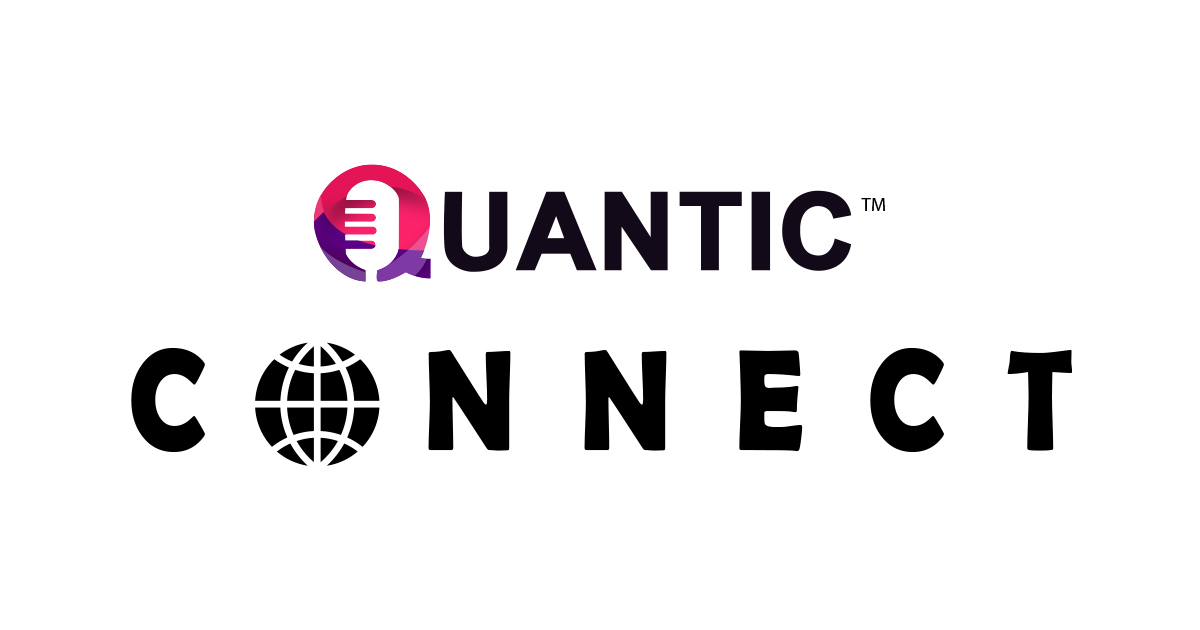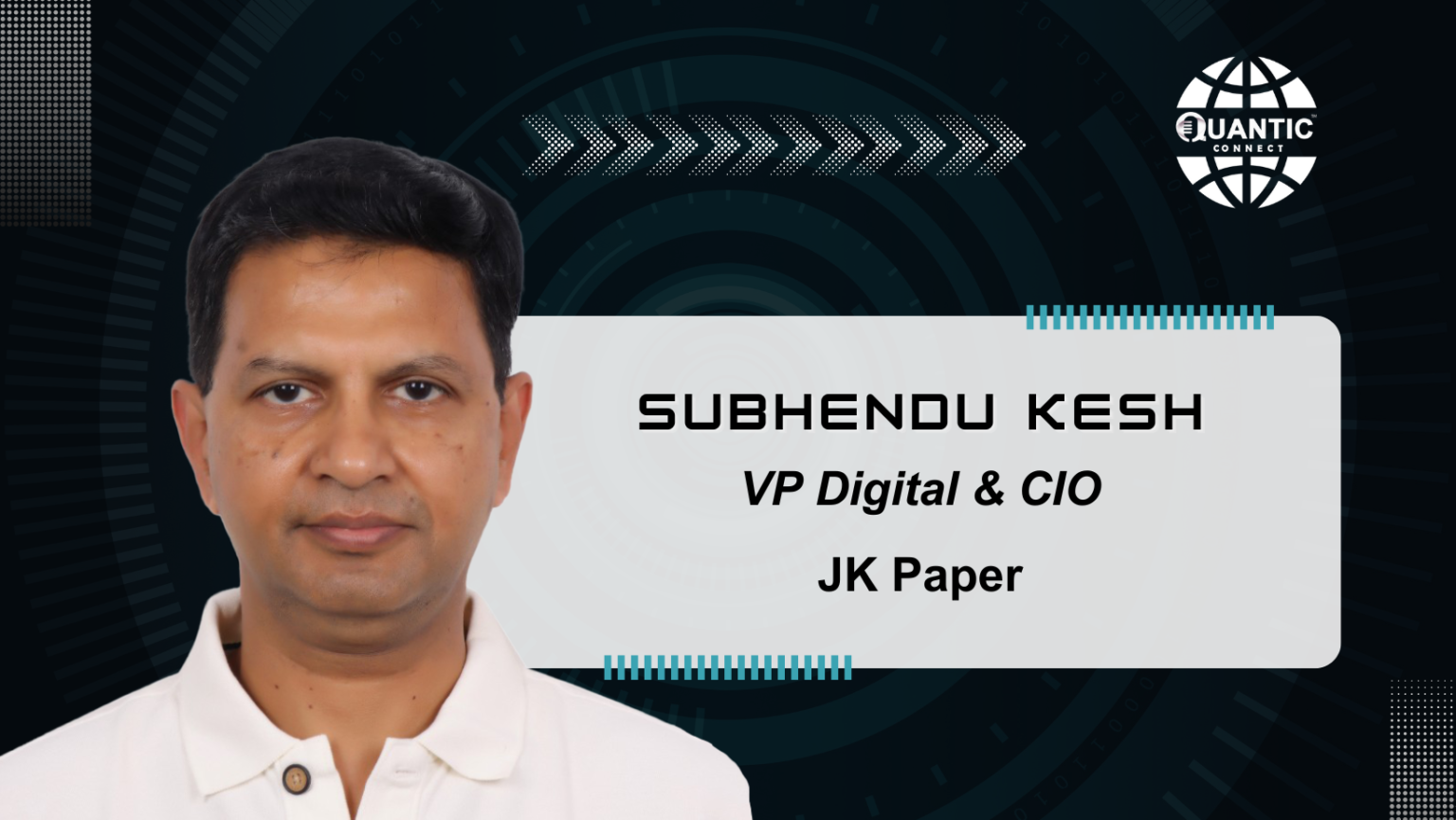Mumbai, 6th May: In the dynamic landscape of modern manufacturing, the convergence of cutting-edge technologies has opened avenues for unparalleled innovation and efficiency. From the integration of IoT sensors to the implementation of data analytics and robotic process automation (RPA), businesses are leveraging these tools to revolutionize operations, drive sustainable practices, and propel towards process excellence. This article aims to dissect the strategic planning and execution necessary for harnessing these technologies effectively, ensuring global delivery excellence, and nurturing a culture of continuous improvement within manufacturing operations.
Join Mr. Subhendu Kesh, VP Digital & CIO at JK Paper in conversation with Mr. Marquis Fernandes, who spearheads the India Business at Quantic India, as delve into the strategic deployment of modern technologies within large-scale manufacturing environments, exploring how they address specific challenges, optimize supply chains, and enhance overall productivity while adhering to principles of environmental stewardship.
Mr. Subhendu Kesh is recognized for his exceptional expertise in Business Technology and Digital Transformation. With over 30 years of experience, he has earned prestigious accolades such as the Platinum (First) Prize in the Overall Digitalisation Category (Large) at the FICCI Industry 4.0 Awards 2022 and the 2nd FICCI Industry 4.0 Award 2023 for JK Paper. His extensive career encompasses delivering innovative services through digitization, data analytics, ITOT and IoT integration, RPA, and business process excellence. He is a strategic leader in enterprise resource planning, mobile technology, cloud computing, and operational efficiency. Throughout his career, he has excelled in global delivery, profit centre management, and establishing centers of excellence. As a thought leader and visionary, he continues to drive impactful change and business transformation across industries.
How do you integrate technologies like IoT, RPA, and data analytics to drive business transformation and process excellence in a large-scale manufacturing environment?
- Understand the specific challenges and goals of the manufacturing environment. Identify pain points, improve operational efficiency, reducing downtime, increase production and optimizing supply chain.
- Deploy IoT sensors, create soft sensors and connected devices across the manufacturing floor based on the need to collect real-time data on various parameters such as machine performance, energy consumption, temperature, vibration, and quality metrics.
- Use data analytics tools and techniques to gain insights from this data. This analysis can help identify patterns, anomalies, and areas for improvement.
- Automate processes through self-learning ML model and create closed predictive loop as much as possible without impacting the product and product quality.
- Integrate IT systems (ERP/MES) and workflows with OT system and create clear ITOT platform.
How do you approach strategic planning and profit centre management in the context of leveraging technology to achieve business objectives?
- Define clear business objectives in line with organization’s strategic goals. Include Revenue Growth, cost optimization, operational efficiency, market share expansion, customer satisfaction etc.
- Leveraging emerging technologies like AI, ML where technology can drive innovation, improve processes efficiency and reduce cost.
- It is important to evaluate the existing technology landscape. Identify gaps, redundancies, and areas for improvement. Also assess the scalability, security, and integration capabilities.
- Create a roadmap with define timeline, milestones, and dependencies for implementing the technology initiatives with proper base line calculation and target with ROI.
- Implement Key Performance Indicators (KPIs), with written down base line to track the progress and impact of technology initiatives on business objectives. Regularly review the metrics to assess the effectiveness of technology investments and make data-driven decisions.
- Technology is constantly evolving, so update on trends and adapt the strategic technology roadmap accordingly. Innovation and agility to leverage technology is a key to success.
How do you ensure effective global delivery of IT services and solutions while maintaining consistency and quality across diverse geographical locations?
- Establish standard processes & methodology with best practices available. This will ensures consistency in service delivery and quality.
- Defines roles, responsibilities, and communication channels.
- Promote collaboration, knowledge sharing, and efficient resource allocation.
- Develop a diverse young agile workforce with a mix of talent and global expertise to crack market dynamics, cultural nuances, and customer expectations.
- Continuous training and development programs on skills.
- Strong governance framework that provides oversight and control over service delivery. Defining key performance indicators (KPIs), service level agreements (SLAs), and metrics to measure and monitor performance.
- Conduct regular audits and reviews to ensure compliance and identify areas for improvement.
What methodologies or frameworks do you suggest one should employ to drive continuous improvement and business process excellence within operations?
- Business Process Reengineering (BPR): Business Process Reengineering involves redesigning and restructuring core business processes to achieve dramatic improvements in critical areas such as cost, quality, service, and speed. BPR often involves radical redesign and optimization of workflows to achieve significant breakthroughs in performance and efficiency.
- Theory of Constraints (TOC): The Theory of Constraints is a management methodology focused on identifying the most limiting factor (constraint) that hinders achieving organizational goals. TOC aims to improve overall system performance by managing and optimizing these constraints strategically.
- Total Quality Management (TQM): Total Quality Management is a comprehensive approach to improving the quality of products and services throughout all levels and functions of an organization. TQM emphasizes continuous improvement, customer focus, employee involvement, and the use of data-driven methods to enhance quality systematically.
- Lean Six Sigma: Lean Six Sigma combines principles from Lean Manufacturing (focused on efficiency and waste reduction) and Six Sigma (focused on quality improvement and defect reduction). This methodology aims to eliminate waste, improve processes, and reduce variation to achieve higher quality and efficiency.
- Kaizen: Kaizen is a Japanese term that translates to “continuous improvement.” It represents a philosophy of making small, incremental improvements in processes, products, and services on a daily basis. Kaizen involves everyone in the organization and aims to cultivate a culture of continuous learning and improvement.
- Continuous Improvement (CI) Culture: Continuous Improvement Culture refers to an organizational mindset and environment where ongoing improvement is embedded in the company’s values and practices. It involves encouraging all employees to identify opportunities for improvement, take ownership of change initiatives, and consistently seek ways to enhance performance and efficiency.
What are your insights into the future of business technology and its implications for the manufacturing industry, particularly in the context of sustainability and environmental stewardship?
The future of business technology in the manufacturing industry is expected to have a significant impact on sustainability and environmental stewardship.
- Digitalization and Industry 4.0, Internet of Things (IoT), artificial intelligence (AI), and big data analytics This digitalization enables real-time monitoring and optimization of resource, waste reduction, and energy efficiency. Manufacturers can achieve real-time monitoring and optimization of resources, leading to significant reductions in waste and improvements in energy efficiency. This enhanced visibility and control enable proactive measures to minimize environmental impact across the production process.
- Transparency and traceability in supply chains which helps ensuring ethical sourcing and accountability throughout the value chain
- Renewable Energy and Green Manufacturing, ZERO to fossil fuel, reduce carbon emissions and environmental footprint. These technological advancements herald a new era of sustainability-driven practices within the manufacturing sector, paving the way for a more environmentally conscious and responsible industry landscape.
To know more about us / publish your article, reach us at
www.quanticindia.com
marquis@quanticindia.com.



